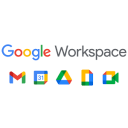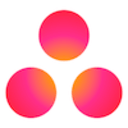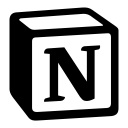Slack vs Google Workspace: Decidiendo la mejor herramienta para tu equipo
- 01Slack vs Google Workspace: resumen
- 02¿Cuál es la diferencia entre Slack y Google Workspace?
- 03Pros y contras de Slack
- 04Pros y contras de Google Workspace
- 05Slack comparado con Google Workspace
- 06Google Workspace comparado con Slack
- 07Comparación de características
- 08Slack vs Google Workspace: ¿Cuál es el mejor para tu negocio?
- 09Promociones en software de Colaboración
- 10Alternativas a Slack y Google Workspace
Accede a ahorros de hasta $9.000 en Slack & $518 en Google Workspace
Slack
25% de descuento en compras de nuevos planes
Accede a ahorros de hasta $9.000 en Slack & $518 en Google Workspace
Slack
25% de descuento en compras de nuevos planes
With the right collaboration tools, you can streamline communication, enhance productivity, and foster better teamwork across your organization. Effective collaboration is essential for driving project success, maintaining a connected workforce, and ensuring that everyone is on the same page, no matter where they are.
When it comes to collaboration platforms, there are plenty of choices available. While having options is beneficial, deciding on the best fit for your team can be a daunting task. To help you navigate through the decision-making process, we've prepared an in-depth comparison of Slack vs Google Workspace, focusing on their core features and key differences.
Slack vs Google Workspace: resumen
Slack and Google Workspace are two leading contenders in the world of team collaboration and communication tools, each bringing unique strengths tailored to specific organizational needs.
Slack is renowned for its robust messaging and collaboration features, offering a dynamic platform that excels in real-time communication, integration with a wide range of third-party tools, and customizable workflows. On the other hand, Google Workspace provides a comprehensive suite of productivity tools, including Gmail, Google Drive, Google Docs, Sheets, and more, all tightly integrated within a cloud-based ecosystem.
Let’s dive into the Slack vs Google Workspace comparison to help you make an informed decision when choosing the right collaboration tool for your organization.
¿Cuál es la diferencia entre Slack y Google Workspace?
When comparing Slack and Google Workspace, it’s important to understand the key differences between these two collaboration platforms to determine which one is best suited for your business needs.
Firstly, Slack is primarily a messaging and collaboration tool that excels in real-time communication. It provides features such as organized channels for team discussions, direct messaging, file sharing, and robust integration with a wide range of third-party applications. Slack is designed to streamline team communication, making it easy to collaborate in real-time, whether through text, voice, or video. Its strengths lie in its ability to integrate with various tools, allowing teams to customize their workspace with apps that fit their specific workflows.
In contrast, Google Workspace is a comprehensive suite of productivity tools that goes beyond messaging. It includes Gmail for email, Google Drive for file storage, Google Docs, Sheets, and Slides for document creation and collaboration, and Google Meet for video conferencing, among other tools. Google Workspace is designed to offer a unified experience where all communication, collaboration, and productivity tools are tightly integrated within one ecosystem. This makes it particularly appealing for organizations that need a full suite of tools to manage emails, documents, and meetings in addition to real-time communication.
While Slack focuses heavily on real-time, channel-based communication and third-party integrations, Google Workspace offers a more holistic approach, combining collaboration and productivity tools into one package. When choosing between Slack and Google Workspace, consider whether your priority is a specialized communication tool that integrates well with other apps (Slack) or a comprehensive suite that covers a broader range of business needs (Google Workspace). Understanding these differences can help you make a more informed decision for your organization.
Pros y contras de Slack
¿Cuáles son las ventajas de Slack?
- Real-time communication: Slack offers instant messaging with real-time notifications, making it easy for teams to stay connected and communicate quickly.
- Channel organization: Conversations can be organized into channels, allowing teams to focus discussions by topic, project, or department. This structure helps in keeping communication organized and accessible.
- Extensive integrations: Slack integrates with a wide range of third-party tools like Google Drive, Zoom, Trello, and more, enabling users to streamline workflows and access other apps directly within Slack.
- Searchable conversations: Slack’s powerful search functionality allows users to find messages, files, and discussions quickly, making it easier to reference past communications.
- Customizable notifications: Users can tailor notifications to their preferences, ensuring they stay informed about important messages while minimizing distractions from less critical conversations.
¿Cuáles son las desventajas de Slack?
- Information overload: With constant messages and notifications, Slack can become overwhelming, especially in large teams with numerous channels. This can lead to distractions and reduced productivity.
- Cost for full features: While Slack offers a free version, many of its advanced features, such as unlimited message history and extensive app integrations, are only available in paid plans, which can be expensive for larger teams.
- Limited file storage: The free version of Slack has limited file storage, which can be quickly exhausted in active teams, requiring either frequent file deletion or a move to a paid plan.
- Dependency on internet: Since Slack is a cloud-based tool, it requires a reliable internet connection. Any connectivity issues can disrupt communication and hinder collaboration.
- Potential for fragmented communication: With multiple channels and private messages, important information can sometimes get lost or fragmented across different conversations, making it difficult to keep track of key discussions.
Compara Slack con otras herramientas
Pros y contras de Google Workspace
¿Cuáles son las ventajas de Google Workspace?
- Comprehensive suite of tools: Google Workspace offers a wide range of integrated tools, including Gmail, Google Drive, Google Docs, Sheets, Slides, Calendar, and Meet. This comprehensive suite covers most business needs for communication, collaboration, and productivity.
- Seamless collaboration: Google Workspace enables real-time collaboration on documents, spreadsheets, and presentations. Multiple users can work on the same file simultaneously, with changes visible in real-time, which enhances teamwork and efficiency.
- Cloud-based accessibility: Being cloud-based, Google Workspace allows users to access their files and applications from any device with an internet connection. This flexibility is particularly beneficial for remote teams and those needing to work on the go.
- Strong security and admin controls: Google Workspace offers robust security features, including two-factor authentication, data encryption, and advanced admin controls. These tools help businesses protect their data and manage user access effectively.
- Scalability: Google Workspace is highly scalable, making it suitable for businesses of all sizes. Whether you're a small business or a large enterprise, you can customize your plan to meet your specific needs, with the ability to add or remove users as required.
¿Cuáles son las desventajas de Google Workspace?
- Learning curve for new users: While Google Workspace is user-friendly, it can still have a learning curve for those unfamiliar with its tools, especially for users transitioning from other platforms like Microsoft Office.
- Limited offline functionality: Although Google Workspace offers some offline capabilities, its full functionality requires an internet connection. This limitation can be challenging for users who need to work in areas with poor connectivity.
- Cost for larger teams: Google Workspace is a subscription-based service, and the costs can add up for larger teams, particularly if you need access to advanced features available in higher-tier plans.
- Less advanced features in some tools: While Google Workspace tools are powerful, some users find that they lack the advanced features available in dedicated software like Microsoft Excel or specialized email clients.
- File compatibility issues: Although Google Workspace supports various file formats, there can sometimes be compatibility issues when importing or exporting files to and from other platforms, especially with complex documents or spreadsheets.
Compara Google Workspace con otras herramientas
Slack comparado con Google Workspace
Slack and Google Workspace serve different but complementary purposes in the realm of business collaboration. Slack excels in real-time communication with its channel-based messaging system, making it ideal for teams that need instant connectivity and seamless integration with other apps.
In contrast, Google Workspace offers a comprehensive suite of productivity tools, including email, document creation, and cloud storage, providing a more holistic solution for both communication and collaboration. While Slack is focused on enhancing team discussions, Google Workspace integrates a broader range of functionalities, making it better suited for organizations seeking an all-in-one platform.
¿Es Slack mejor que Google Workspace?
Whether Slack is better than Google Workspace depends on your organization's specific needs. Slack excels as a dedicated communication tool, particularly for teams that prioritize real-time interaction, quick decision-making, and integration with various third-party apps. It's highly effective for streamlining conversations and keeping project-related discussions organized.
On the other hand, Google Workspace offers a more comprehensive solution with tools for email, document creation, file storage, and video conferencing, making it ideal for organizations that require an all-encompassing platform for both collaboration and productivity.
¿Para qué es mejor usar Slack?
Slack is best used for facilitating real-time communication and collaboration within teams. It excels in creating organized, topic-specific channels where team members can engage in focused discussions, share files, and collaborate seamlessly.
Slack's ability to integrate with a wide variety of third-party apps enhances its functionality, making it a central hub for team workflows. Its real-time messaging capabilities, combined with features like direct messaging, video calls, and customizable notifications, make Slack ideal for fast-paced environments where immediate communication and quick decision-making are crucial. Slack is particularly effective for remote teams needing constant, structured interaction.
¿Puede Slack reemplazar a Google Workspace?
Slack cannot fully replace Google Workspace, as the two serve different functions within a business environment. Slack is primarily a communication tool, excelling in real-time messaging and team collaboration through channels and integrations with other apps. Google Workspace, on the other hand, offers a comprehensive suite of productivity tools, including email, document creation, file storage, and video conferencing.
While Slack enhances communication and can integrate with Google Workspace to streamline workflows, it lacks the broad range of functionalities needed for tasks like document management, email, and large-scale project collaboration that Google Workspace provides.
¿Es Slack más barato que Google Workspace?
Slack and Google Workspace differ in pricing structures, making a direct comparison challenging. Slack offers a free tier with limited features, while its paid plans are generally focused on enhancing communication and integration capabilities.
Google Workspace, however, provides a suite of productivity tools, including email, cloud storage, and collaboration apps, with pricing based on a per-user model. Typically, Slack’s pricing plans can be cheaper if you're only looking for a robust communication tool. However, if your business requires a full range of productivity tools, Google Workspace may offer more value for the price, despite potentially higher costs per user.
¿Hay un software de Colaboración mejor que Slack?
While Slack is a leading tool for team communication and collaboration, it's important to consider alternatives that might better align with your specific needs.
Some notable alternatives to Slack in the collaboration space include Microsoft Teams, Google Chat, Zoom, and Discord.
The choice of collaboration software depends on your organization’s unique requirements, team size, and feature preferences. For example, if you need deep integration with Microsoft Office tools, Microsoft Teams might be a better option. If your organization relies heavily on Google's productivity suite, Google Chat could be more suitable. For video conferencing-focused communication, Zoom might offer superior functionality.
25% de descuento en compras de nuevos planes en Slack
Obtén 25% de descuento en compras de nuevos planes en Slack y ahorra hasta $9.000 con Secret.
Google Workspace comparado con Slack
Google Workspace and Slack serve different roles in business collaboration. Google Workspace offers a comprehensive suite of tools, including Gmail, Google Drive, Docs, Sheets, and Meet, making it ideal for managing emails, creating documents, and collaborating across a wide range of tasks within a unified platform.
In contrast, Slack focuses on real-time communication, providing organized channels for team discussions, direct messaging, and integration with various third-party apps. While Google Workspace is more suited for broad productivity needs, Slack excels in fostering immediate, focused communication. Both can complement each other but serve distinct functions within a workplace.
¿Es Google Workspace mejor que Slack?
Whether Google Workspace is better than Slack depends on the specific needs of your organization. Google Workspace is superior if you require an all-in-one platform that handles a broad spectrum of productivity tasks, from managing emails and creating documents to cloud storage and video conferencing. It's particularly effective for organizations that need seamless collaboration across various tools within a unified environment.
However, if your team prioritizes real-time, focused communication, Slack might be the better choice. Google Workspace is better for those seeking a comprehensive productivity suite, while Slack is ideal for enhancing team communication and collaboration.
¿Para qué es mejor usar Google Workspace?
Google Workspace is best used for comprehensive productivity and collaboration across teams and organizations. It excels in providing a seamless, cloud-based environment where users can manage emails with Gmail, create and share documents with Google Docs, collaborate on spreadsheets with Sheets, and organize schedules through Google Calendar.
Its tools are tightly integrated, allowing for real-time collaboration on documents, easy file sharing through Google Drive, and effective communication via Google Meet. Google Workspace is particularly valuable for businesses that require a unified platform to handle a wide range of tasks, from communication to document management and beyond.
¿Puede Google Workspace reemplazar a Slack?
Google Workspace cannot fully replace Slack, as the two serve different, though complementary, purposes. Google Workspace offers a suite of productivity tools, including Gmail, Google Drive, and Google Meet, which are ideal for managing emails, creating documents, and conducting video meetings.
However, Slack specializes in real-time, channel-based communication, providing a more focused platform for instant messaging, team discussions, and integrations with other business apps. While Google Workspace includes communication tools like Google Chat and Meet, they lack the robust, threaded conversation structure and integrations that make Slack essential for many teams. Both tools are often used together to maximize efficiency.
¿Es Google Workspace más barato que Slack?
Google Workspace and Slack have different pricing models, making direct cost comparisons complex. Google Workspace charges a per-user fee that includes a wide range of productivity tools such as email, document creation, cloud storage, and video conferencing. Slack, on the other hand, offers a free tier with basic features and charges for additional functionality, mainly focused on communication and integration with other apps.
Generally, Google Workspace’s pricing plans may seem more expensive because they provide a comprehensive suite of tools. However, if you only need robust messaging capabilities, Slack might be the cheaper option, depending on the specific plan and features required.
¿Hay un software de Videoconferencia mejor que Google Workspace?
While Google Workspace is a widely respected productivity suite, it's important to consider other alternatives that might better align with your specific needs and preferences.
Notable alternatives to Google Workspace include Microsoft 365, Zoho Workplace, ClickUp, Apple iWork, and OnlyOffice.
The choice depends on your organization’s unique requirements, goals, and specific preferences. If you're seeking a platform with deep integration with Microsoft tools and advanced collaboration features, Microsoft 365 could be a superior option. For those looking for a more cost-effective solution with a wide array of business apps, Zoho Workplace may be more suitable.
20% de descuento en los planes Plus durante 1 año en Google Workspace
Obtén 20% de descuento en los planes Plus durante 1 año en Google Workspace y ahorra hasta $518 con Secret.
Comparación de características
Google Workspace supera a Slack con características de seguridad superiores
With its robust security options like 2-Step Verification, Single Sign-On (SSO), endpoint management, and data retention controls, Google Workspace offers a level of security that far outweighs Slack’s focus on customizable notification settings. These advanced features are particularly beneficial for larger organizations that require stringent security measures to protect sensitive information.
For example, Google Workspace's central administration console allows IT administrators to easily configure security settings across the entire organization, ensuring consistent protection and compliance with industry standards. The ability to manage user access, monitor activity, and enforce security policies from one unified platform makes Google Workspace an ideal choice for businesses that prioritize data security and need comprehensive control over their digital environment, a capability that Slack's more communication-focused platform simply can't match.
Slack se destaca sobre Google Workspace con capacidades superiores de mensajería directa
Unlike Google Workspace, which primarily emphasizes collaboration within documents, spreadsheets, and emails, Slack stands out for its superior direct messaging feature. Slack allows users to send private messages to individuals or small groups effortlessly, right within the platform, making it an ideal tool for quick, confidential, or one-on-one communication.
For example, team members can instantly share sensitive information, discuss project details, or resolve issues without interrupting broader conversations happening in channels. This direct messaging capability is enhanced by Slack’s seamless integration of file sharing, mentions, and emoji reactions, providing a more dynamic and interactive communication experience than what Google Workspace offers through its email and chat functions.
Slack se destaca sobre Google Workspace con capacidades de integración superiores
In terms of integrations, both Slack and Google Workspace offer a plethora of possibilities, but Slack narrowly edges out Google Workspace due to its integration-centric approach. Slack has established itself as a central 'hub' in the SaaS world, where virtually all your work can be managed in one place. This is largely due to its impressive list of over 2,600 third-party app integrations, ranging from project management tools like Asana and Trello to CRM services like Salesforce and HubSpot. These integrations allow Slack to bridge gaps between various software systems, enabling users to manage tasks, track progress, and communicate with team members—all without ever leaving the platform.
Google Workspace, while also offering robust integrations, focuses more on its internal suite of tools like Gmail, Drive, and Calendar, making it less flexible in connecting with the diverse range of external apps that Slack embraces so effectively.
Google Workspace supera a Slack con un almacenamiento y gestión de archivos superiores
When it comes to storage space, Google Workspace definitely takes the cake, far surpassing Slack’s more limited file-sharing capabilities. Google Workspace's Google Drive allows users to store, share, and access important documents from any device, making it an excellent choice for businesses with extensive data storage needs. For example, companies can store vast amounts of data, from large media files to comprehensive project documents, all organized and easily retrievable. Google Drive's automatic file update and versioning features ensure that everyone always has access to the latest version of a document, reducing the risk of outdated information.
This seamless synchronization and robust storage capacity make Google Workspace a superior option for organizations that prioritize data management and collaboration across multiple devices and locations. Slack, while effective for communication and quick file sharing, simply can't match the depth of storage and file management capabilities that Google Workspace offers.
Los canales de Slack ofrecen una organización superior en comparación con las amplias herramientas de colaboración de Google Workspace.
While Google Workspace provides a robust set of collaboration tools, Slack's Channels feature excels in offering better organization and focus. Slack Channels create dedicated spaces for specific topics, projects, or teams, allowing users to keep conversations neatly organized and ensuring that relevant information is easily accessible. For example, a marketing team can have a channel specifically for campaign discussions, separate from other general communication, which streamlines project management and minimizes distractions. Users can join or leave channels as needed, providing the flexibility to focus on what's most relevant to their work.
In contrast, Google Workspace’s broad scope of tools, while comprehensive, can sometimes lead to information overload, as users must navigate through various apps and documents to find specific details. Slack’s structured and topic-centered approach through Channels makes it easier for teams to maintain clarity and productivity in their communications.
Ambos Slack y Google Workspace ofrecen excelentes funciones de videollamadas y llamadas de voz.
Both Slack and Google Workspace provide excellent video and voice calling features, enabling users to initiate one-on-one or group calls directly within their respective platforms. This functionality is particularly valuable for remote teams and virtual meetings, allowing seamless communication and collaboration across distances. For instance, Google Workspace's Google Meet offers high-quality video conferencing with features like screen sharing and real-time captions, making it ideal for large team meetings or presentations.
On the other hand, Slack’s calling feature, while simpler, integrates seamlessly with ongoing conversations in channels or direct messages, making it perfect for quick, ad-hoc discussions. Whether you choose Google Meet for its robust conferencing capabilities or Slack’s built-in calling for its ease of use, both platforms provide powerful tools to keep your team connected and productive.
Slack brilla más que Google Workspace en cuanto a facilidad de uso
Despite being renowned for its powerful features, Slack reigns supreme when it comes to user-friendliness. Designed to facilitate swift and seamless communication among teams, Slack's intuitive user interface allows users to quickly adapt and easily navigate through channels and direct messages. The platform’s simplicity is further enhanced by its drag-and-drop file sharing, customizable notifications, and the ability to create and join channels based on projects or departments. These features collectively create a polished user experience that meets both individual and team needs effortlessly.
On the other hand, Google Workspace, while packed with essential business tools like Gmail, Google Drive, and Google Calendar, tends to have a steeper learning curve. The platform’s interface, though clean and well-organized, can be overwhelming for new users due to the extensive range of integrated applications, such as Google Docs, Sheets, and Meet. This comprehensive suite, while powerful, requires more time to master, making Slack the more user-friendly option for teams seeking immediate ease of use and quick onboarding.
Suscríbete a nuestros boletines informativos.
No hay FOMO aquí. Manténgase al día sobre todas las últimas ofertas y noticias con nuestro boletín mensual directamente en su bandeja de entrada como 126.000+ emprendedores (+ Obtenga un 10% de descuento en nuestra Membresía Premium!)
Slack vs Google Workspace: ¿Cuál es el mejor para tu negocio?
Slack es la mejor herramienta para ti si:
- Tu equipo necesita una plataforma centrada en la comunicación organizada en tiempo real, donde los canales puedan estar dedicados a proyectos específicos, asegurando que las conversaciones se mantengan enfocadas y sean fácilmente accesibles.
- Necesitas integraciones extensas de aplicaciones de terceros para optimizar los flujos de trabajo, permitiendo que tu equipo gestione tareas, archivos y notificaciones todo dentro de un centro de comunicación centralizado.
- La mensajería rápida y efectiva uno a uno o en pequeños grupos es esencial para tu equipo, permitiendo una comunicación rápida y directa sin necesidad de cambiar entre diferentes aplicaciones o plataformas.
- La flexibilidad para personalizar las notificaciones y la configuración del espacio de trabajo es importante, ya que permite a los usuarios adaptar su experiencia en Slack para minimizar distracciones y mejorar el enfoque.
- Tu equipo prospera en la colaboración a través de la mensajería instantánea y la toma de decisiones rápida, donde la velocidad y la facilidad de comunicación son cruciales para mantener los proyectos avanzando de manera eficiente.
Google Workspace es la mejor herramienta para ti si:
- Necesitas un conjunto completo de herramientas de productividad, que incluya correo electrónico, creación de documentos y almacenamiento en la nube, todo integrado sin problemas para apoyar una amplia gama de tareas empresariales.
- La colaboración en documentos, hojas de cálculo y presentaciones en tiempo real es crítica, permitiendo que múltiples miembros del equipo trabajen simultáneamente y vean los cambios al instante sin problemas de control de versiones.
- Su organización requiere una fuerte seguridad y controles administrativos, con características como la Verificación en 2 Pasos y la gestión centralizada para proteger datos sensibles y mantener el cumplimiento.
- Prefieres una solución basada en la nube que ofrezca fácil acceso a archivos y herramientas desde cualquier dispositivo, asegurando flexibilidad y movilidad para tu fuerza laboral.
- La integración con otros servicios de Google, como Gmail, Calendar y Meet, es esencial, proporcionando una plataforma unificada para la comunicación, la programación y la gestión de proyectos.
Alternativas a Slack y Google Workspace
Promociones en software de Colaboración
Empieza a ahorrar en el mejor SaaS con Secret.
Secret ya ha ayudado a decenas de miles de startups a ahorrar millones en los mejores SaaS como Slack, Google Workspace y muchos más. Únete a Secret ahora para comprar software de forma inteligente.



















